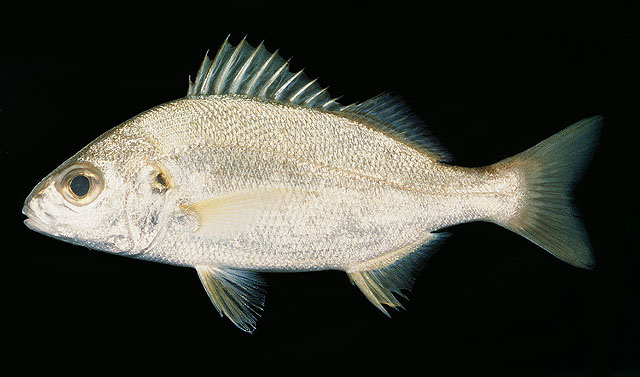| Haemulidae (Grunts), subfamily: Haemulinae |
| 55 cm TL (male/unsexed) |
|
reef-associated; brackish; marine; depth range 1 - 50 m |
| Southeast Atlantic: north of Swakopmund, Namibia (Ref. 11228). Indian Ocean: east coast of Africa and Madagascar to Arabia, India and the Malay Peninsula. |
|
Dorsal spines (total): 12-12; Dorsal soft rays (total): 15-17; Anal spines: 3-3; Anal soft rays: 11-13. Silver to greenish, darker above; dark blotch on upper opercle; young with yellowish fins, older specimens dusky (Ref. 2799). |
| Inhabits coastal waters (Ref. 5213). Plentiful in tidal estuaries (Ref. 2135). Stomach contents of specimens collected from Iraq composed mainly of mollusks, sponges and tunicates (Ref. 97537). Large shoals of juveniles occur around shallow water reefs where they consume shrimps and other small invertebrates, being themselves eaten by larger fish; larger specimens are found in deeper water where they spawn throughout the year. Used extensively for bait, flesh rather insipid (Ref. 2799). |
|
Least Concern (LC); Date assessed: 28 June 2018 Ref. (130435)
|
| harmless |
Source and more info: www.fishbase.org. For personal, classroom, and other internal use only. Not for publication.
